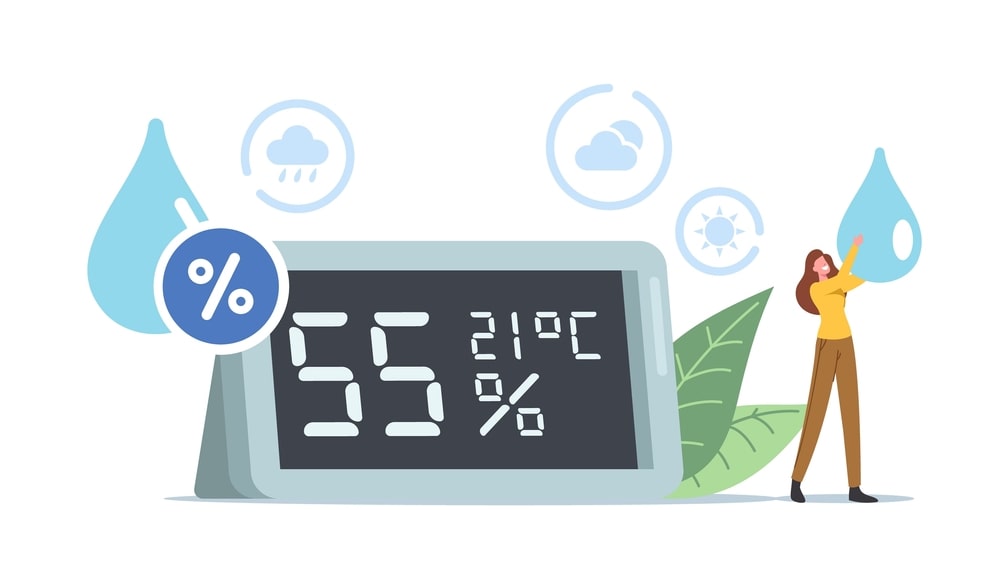Measurement of humidity can be measured by the following methods.
Direct Method
A known volume of air is drawn through sulphuric acid or phosphorus pentoxide. The moisture present in the air gets absorbed. The moisture content is determined by the chemical or gravimetric method. From the difference between initial and final masses (before and after passing air), humidity is estimated.
Psychrometric Methods
(Wet-Bulb and Dry-Bulb Temperatures)
This method involves the determination of wet bulb and dry bulb temperatures. The construction of wet bulb and dry bulb type psychrometer is described in Figure 1.

Psychrometric Methods of the measurement of humidity Wet-bulb-dry-bulb type consists of two thermometers. The bulb of one thermometer is kept open to the ambient conditions. This thermometer gives dry-bulb temperature. The bulb of the second thermometer is kept moist by attaching a muslin wick immersed in a water reservoir. This thermometer gives wet-bulb temperature. When this unit is kept for a while, the wet-bulb temperature reaches a minimum and remains constant. The wet-bulb temperature will be lower than the dry-bulb temperature. The two temperatures become the same when the relative humidity is 100%. Under these conditions, there is no net evaporation of water from the wick. It is essential to allow the wet-bulb thermometer remains wet and radiation to this bulb must be minimal. The limitations are skill in handling and an open place for swinging the psychrometer. These readings are used for finding humidity from the adiabatic cooling line in the psychrometric charts.
- Locating the line (psychometric charts) intersecting the saturation curve at the observed wet-bulb temperature.
- The line to its intersection with the y-axis at the observed dry bulb is temperate.
Dew-Point Method
In this method, the formation of mist and the disappearance of mist are considered and the dew point is determined. Dew point temperature is noted on the temperature axis (x-axis) and moved vertically on the psychrometric chart. The intersect point on the saturated curve (100%) is identified and moved horizontally towards the humidity axis (y-axis).
The point of intersection is reported as the humidity of the sample. A cooled and polished disk is placed in a vessel containing the gas, whose humidity is to be determined. The temperature of the disk is gradually lowered using liquid air or liquid carbon dioxide or ether. Soon, mist condenses on the polished surface. The temperature at which mist just appears is noted. It is the dew point. Then the temperature of the disk is slowly increased and the disappearance of mist is observed. The temperature is noted. The average of these two temperatures represents an accurate dew point.
Errors may be possible in noting the precise temperature. It is also difficult to detect the formation and disappearance of mist.
Make sure you also check our other amazing Article on : Pressure Sand filter
